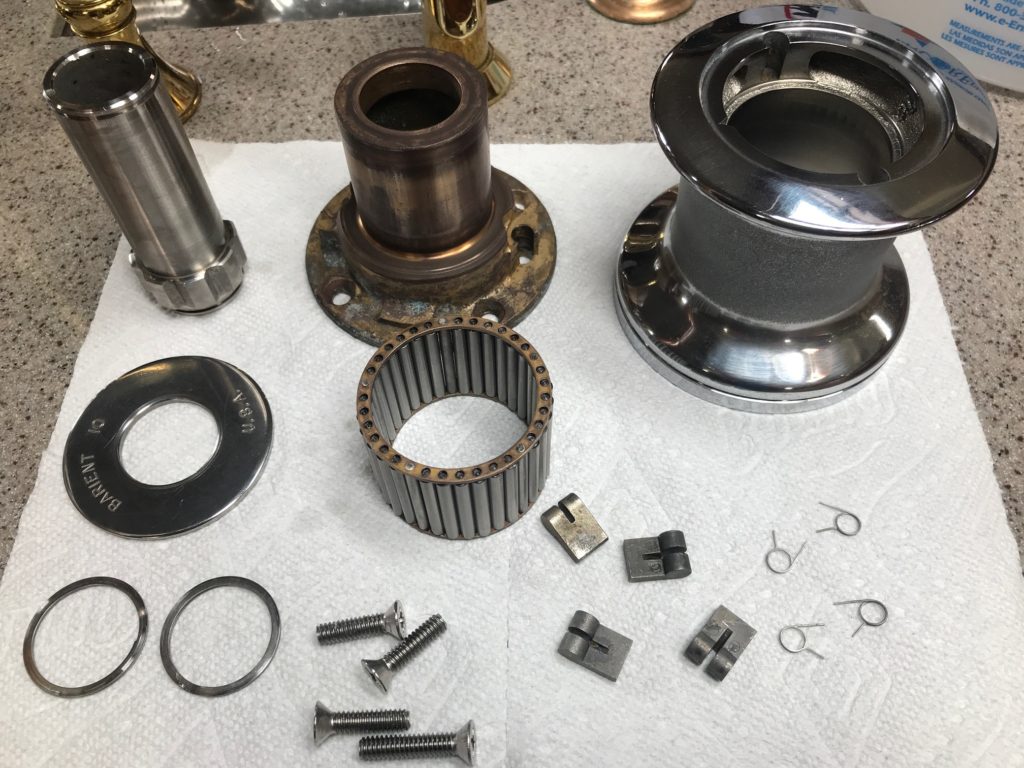There are 12 Barient winches on Apropos:
| 2- 28 Self Tailing, 2-speed | Jib Sheets |
| 3- 23 Self Tailing, 2-speed | Stays’l Sheet and Main Sheet |
| 3- 18, 2-speed | Main Halyard, Spinnaker Halyard, General purpose Halyard |
| 4- 10, 1-speed | Mizzen Halyard, Mizzen Sheet, Main Out-haul, Main Reefing |
Winch numbers (multiplied by 100), are standardized according to their strength. For example, size 28 is capable of 28,000 lbs of load.
All winches were serviced in 2004 during a major refit just before I bought the boat. We serviced the 2-28s and 3-23s in 2014 before our South Pacific cruise. So we were far-overdue for a complete cleaning/lubing of all 12 winches.
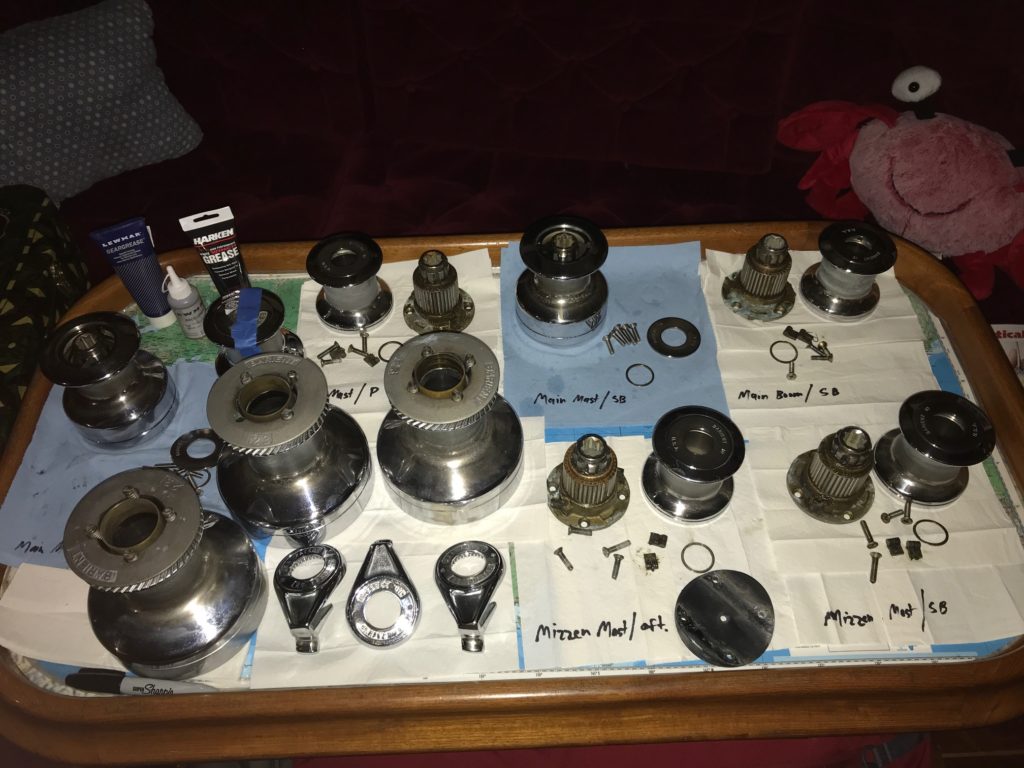
The 7 smaller winches (Barient 10s and 18s) are fastened to the masts or boom with 4 or 5 ss screws and can be easily removed for servicing. But the 3 Barient 23s are mounted with ss screws but also bedded down to the cabin top with something not easily removable. These can be serviced by disassembling the winch in place. The 2 Barient 28s can also be removed but requires unbolting 5 ss hex bolts that attach them to aluminum winch bases.
The Barient 10s and single speed winches and are the simplest to take apart and clean. Here are the basic steps for servicing these small winches:
- Separate the drum from the internal parts by removing the snap spring and cover plate and carefully pulling the drum off. Remove the 2 pawls/springs at the top of the drum.
- Remove the 4 ss screws that fasten the winch to the boat.
- Disassemble the winch by first removing the snap spring on the bottom of the winch base and remove the 2 pawls/springs.
- Slide the cage bearing off the shaft
- Clean all parts with mineral spirits to remove grease and dirt. A toothbrush is helpful on the cage bearing and bronze wool can be used on the bronze and ss parts. The drum has a chrome plating and bronze wool is safe to use on it.
- Assemble in reverse order. Oil the pawls/springs with pawl oil (never use grease). Lightly grease the bronze shaft and cage bearing with winch grease.
- Screw winch in place using Tef-Gel on the ss screw threads when going into aluminum mast/boom. Carefully slide drum back onto the winch while squeezing the pawls (front 2 first, then back 2) so they clear the ratchet teeth.
The larger 2-speed winches (Barient 18) steps are similar but there are more gears and bearings. The Barient 23s have even more parts (30 total!). It’s good to take pictures during disassembly to reference when putting it all back together. Apropos has 2 identical 23s next to each other so I was able to look at an assembled one while assembling the other.
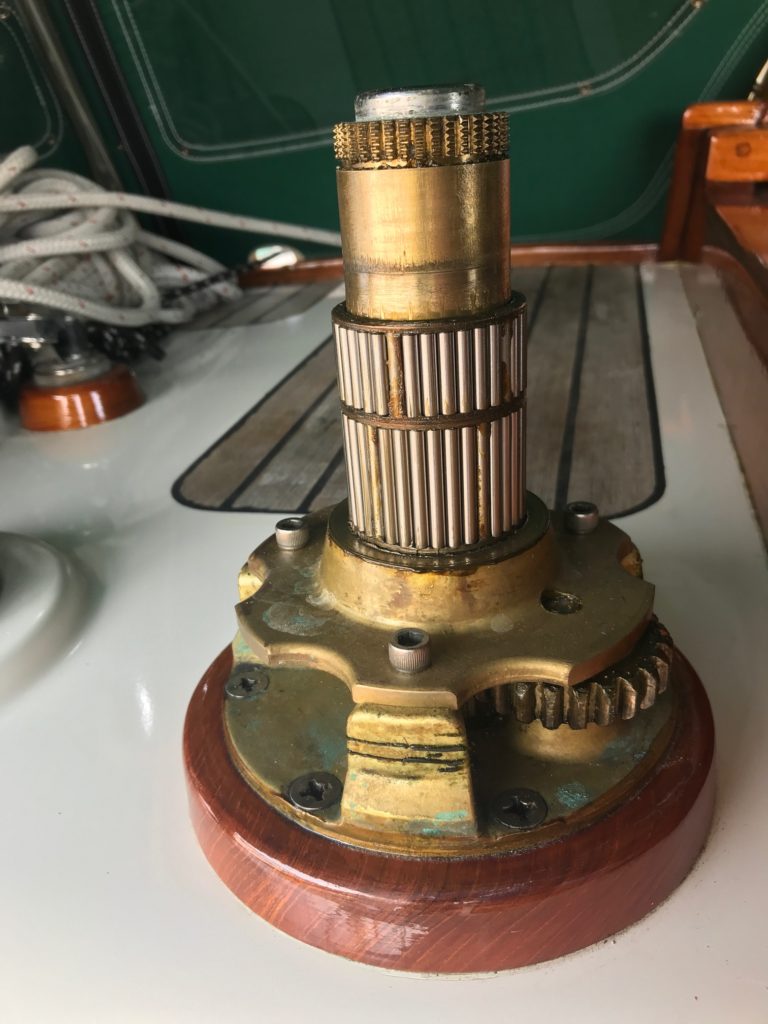
The largest winches on Apropos are the 2 Barient 28ST 2-speed jib-sheet winches. They are also the most exposed winches since they are outboard the cockpit and see the most seawater and dust/debris than the other winches that are under the dodger or on the masts and booms. After removing the drum, there were 4 ss screws holding the winch to the aluminum winch base. But after removing the 4 screws, the winch wouldn’t budge due to corrosion between the bronze and aluminum. We scraped away at the corrosion around the 4 feet and sprayed a generous amount of anti-seize solution on all 4 joints, then allowed it soak for 2 days. It still took some pretty hard hits with a hammer, using a wood block against the winch shaft, to free them.
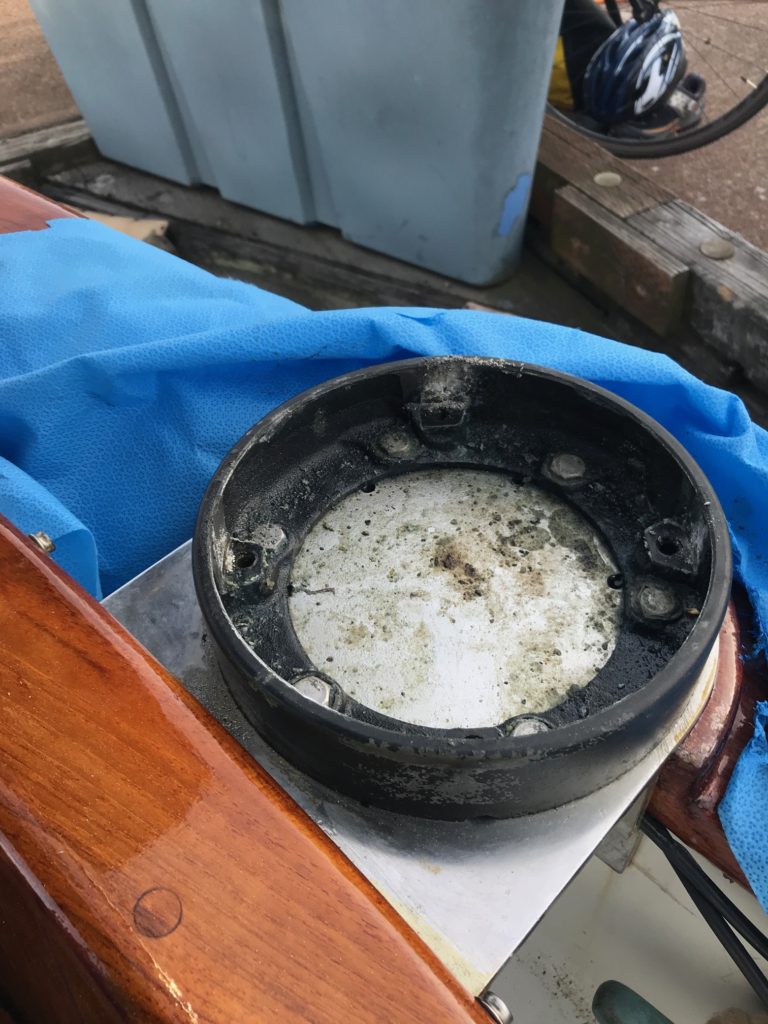
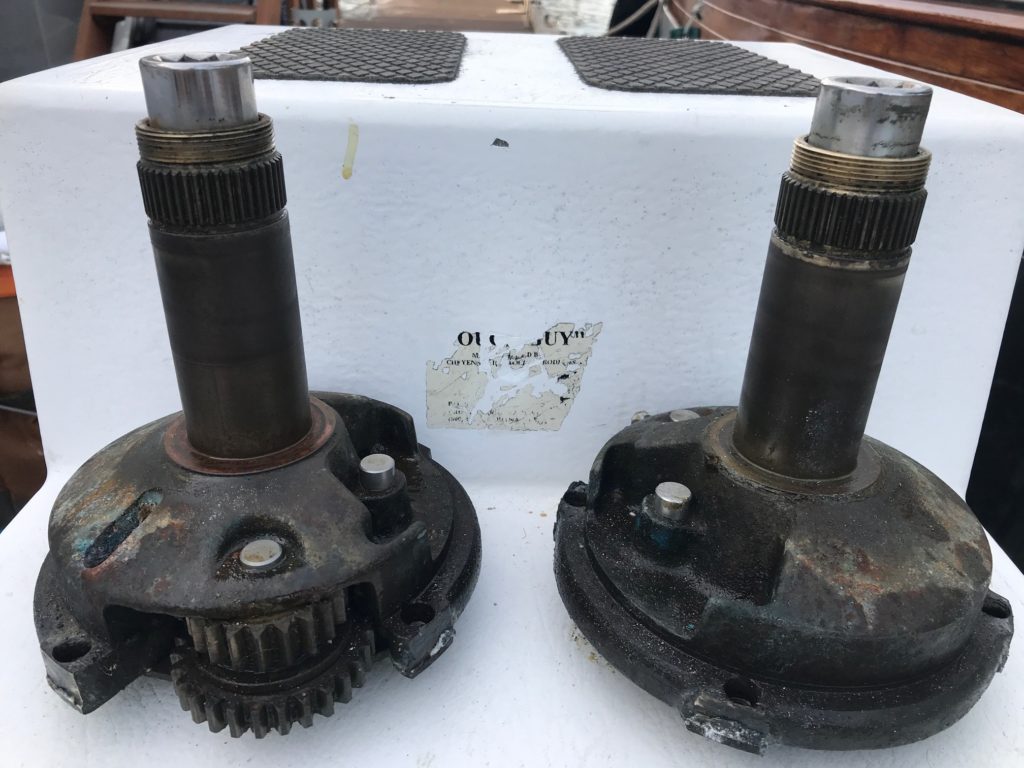
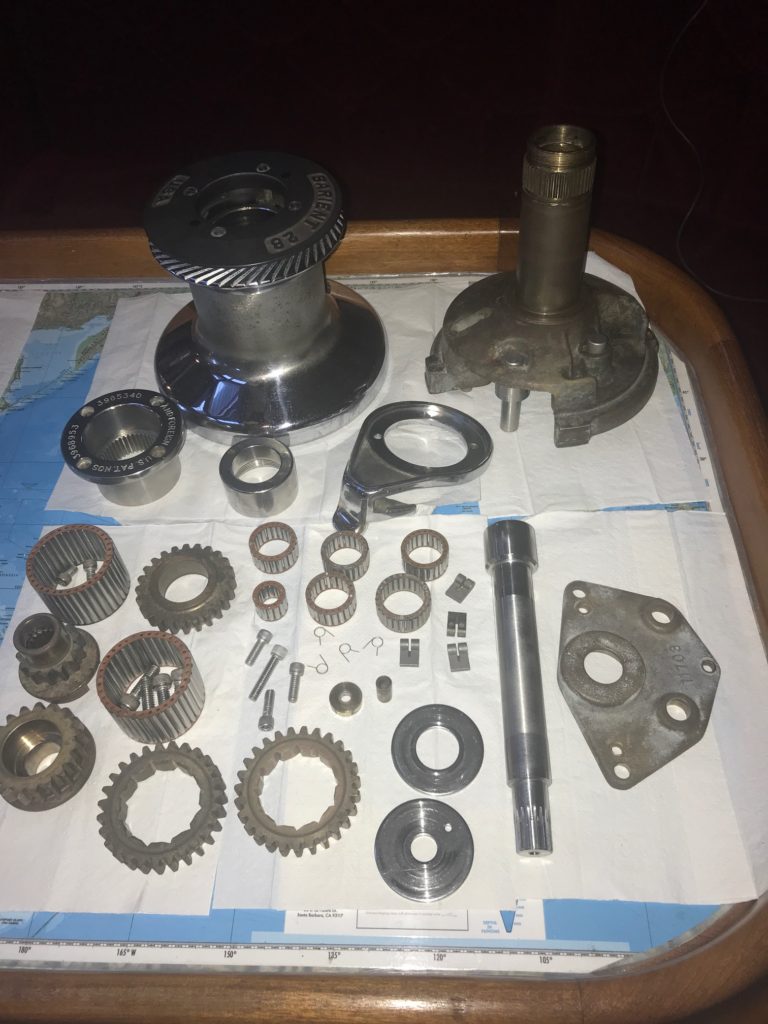
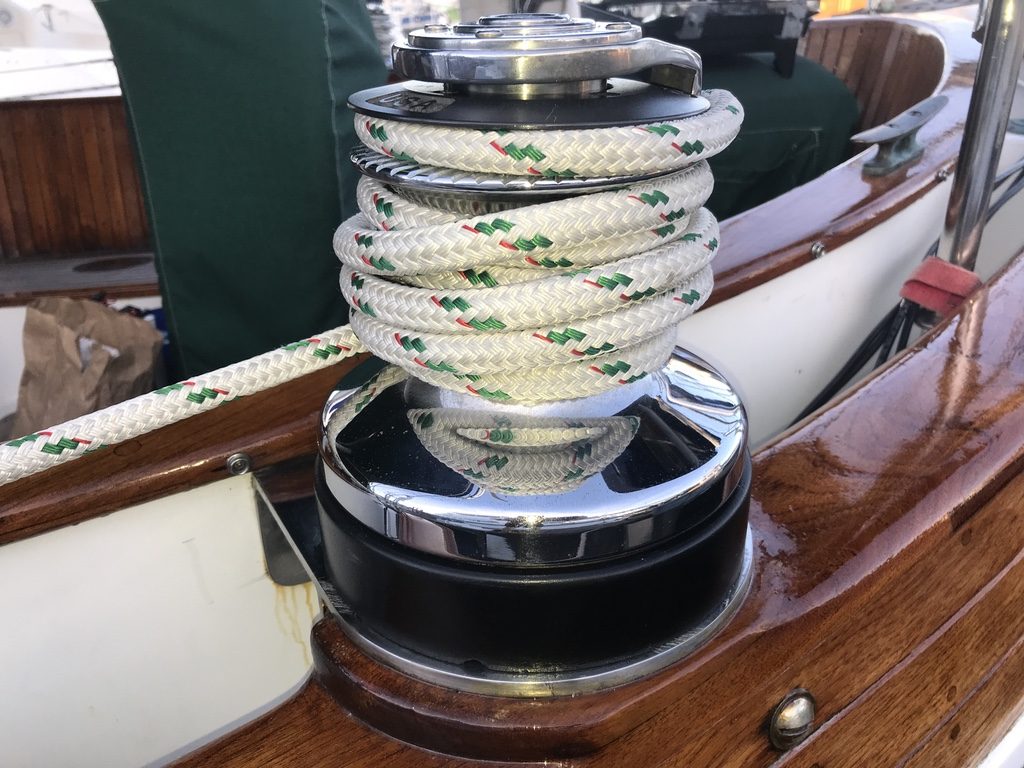
Conclusion
Barient winches are built like tanks! There are no plastic parts like in some winches. All the gears are heavy-duty bronze with stainless steel shafts. The cage bearings , pawls & springs are all very high quality. My winches are over 35 years old and after servicing them, are as good as new. I even decided to use my original pawls since they were in great shape, and I read that replacement pawls are not made with as high of quality material as the original Barient pawls, and they cost was something like $12 each (there are 4 pawls per winch X 12 winches, so total cost for just the pawls was going to be $576!).
With so many winches on Apropos, it took a lot of time to service all of them. I estimate it took 2 hours for each of the single speed 10s, and 3 hours for the 2-speed 18s, 23s and 28s. That’s a total of 32 hours spaced out over a week. The only costs were pawl oil, winch grease, and mineral spirits.
A little bit about the history of Barient. The American company was founded by 2 sailing enthusiasts–Derek Baylis, owner of SV Orient, and Jim Michael, owner of SV Baruna. Their purpose of designing and building winches was for use on their own boat (and their friends’ boats). They ended up creating a business by combining the boat names (BARuna orIENT) and produced some of the best winches available. They never really intended to profit from the business, and eventually sold it to Lewmar. Lewmar also purchased the Barlow winch company, then discontinued both the Barient and Barlow manufacturing. Clever way to beat the better competition–buy them out and then keep making only their own inferior product! Parts are no longer made for Barient winches, but the good news is you can find old Barient winches that with some servicing, are probably as good as, or better than the new ones made by other companies.
